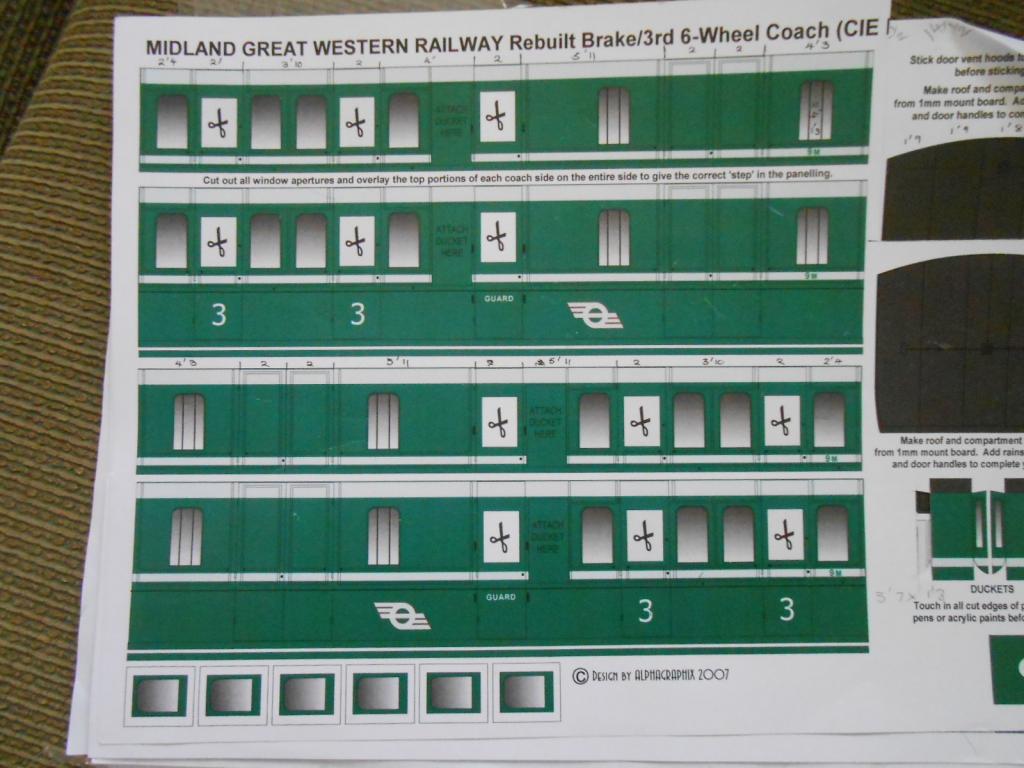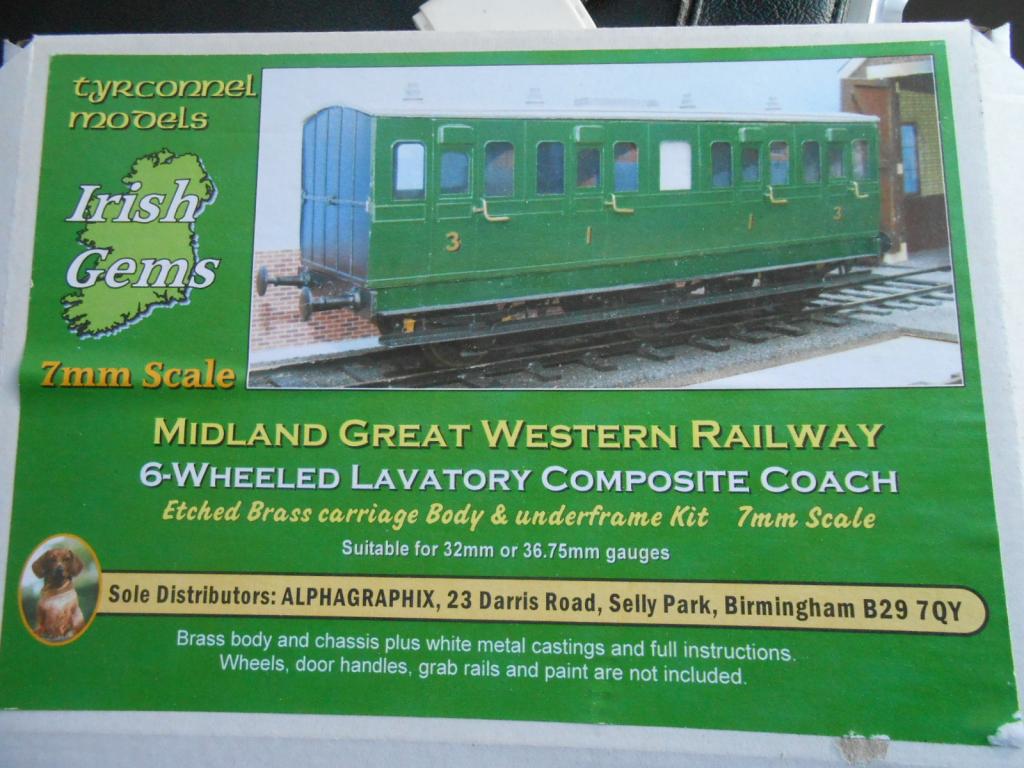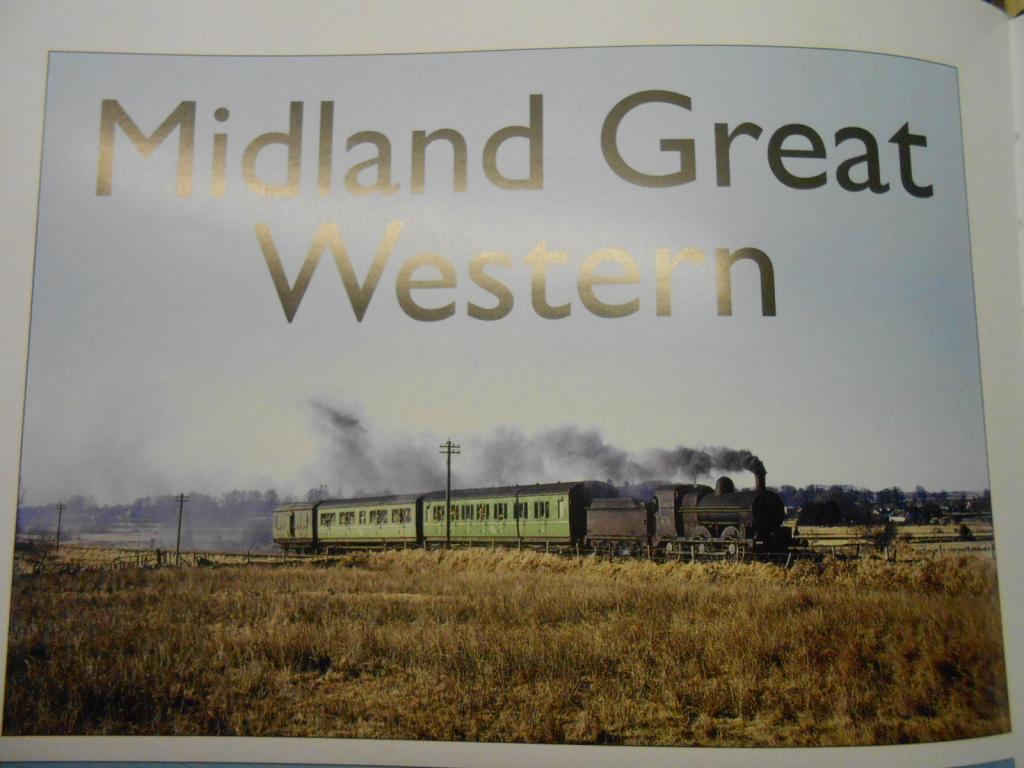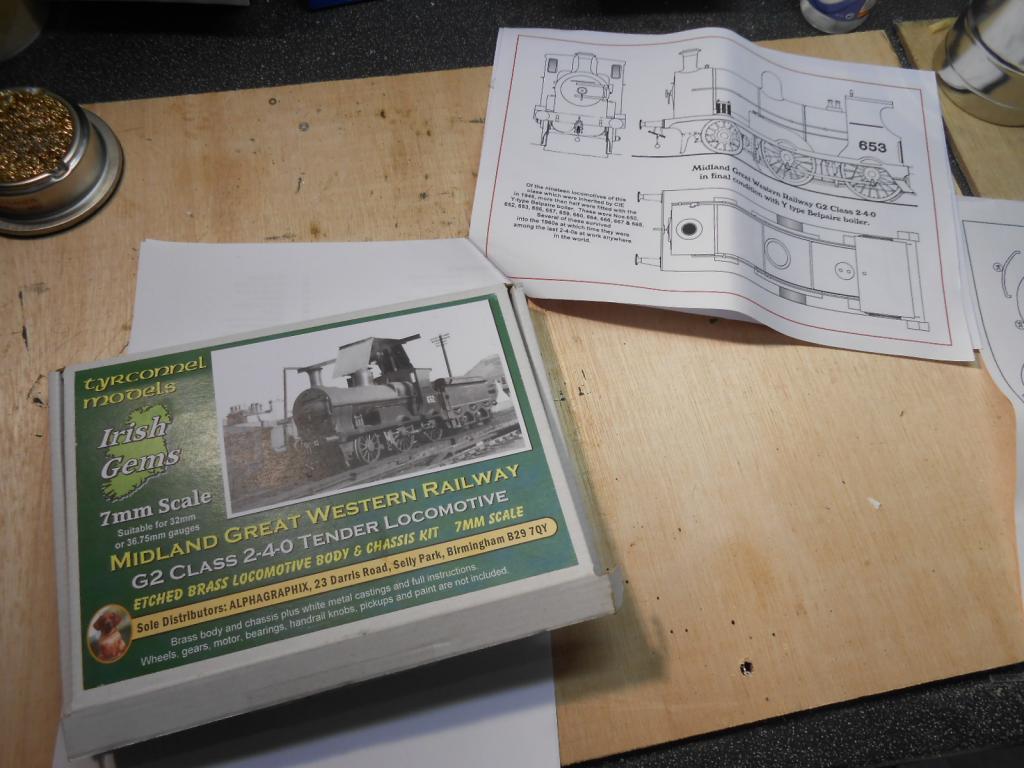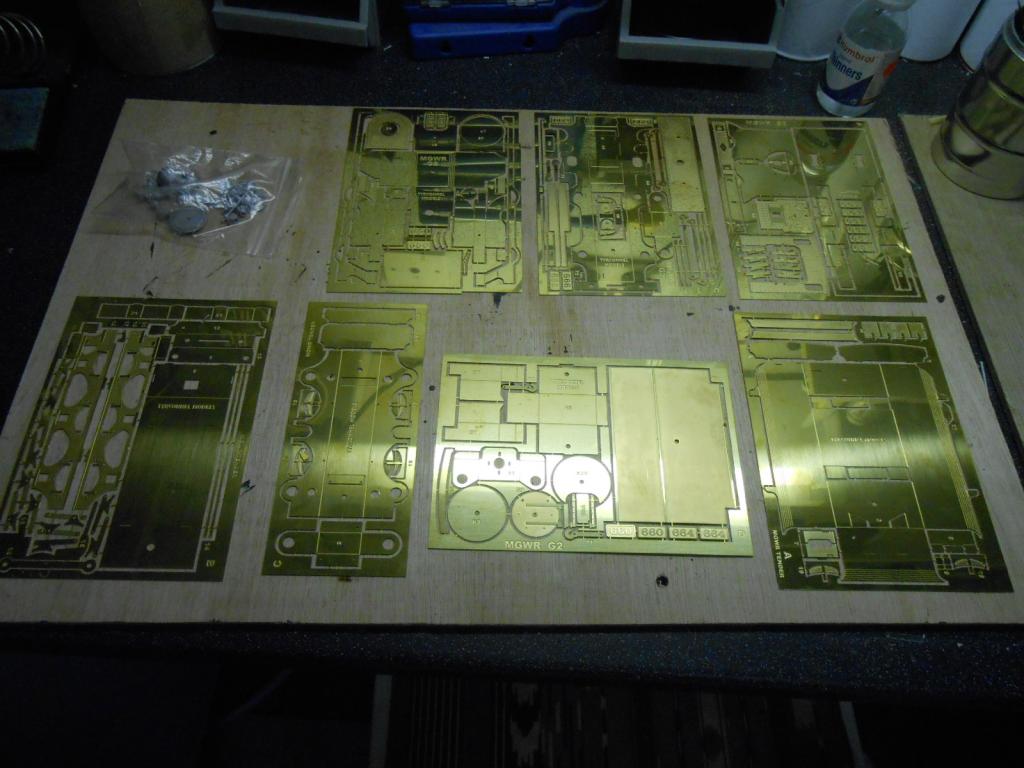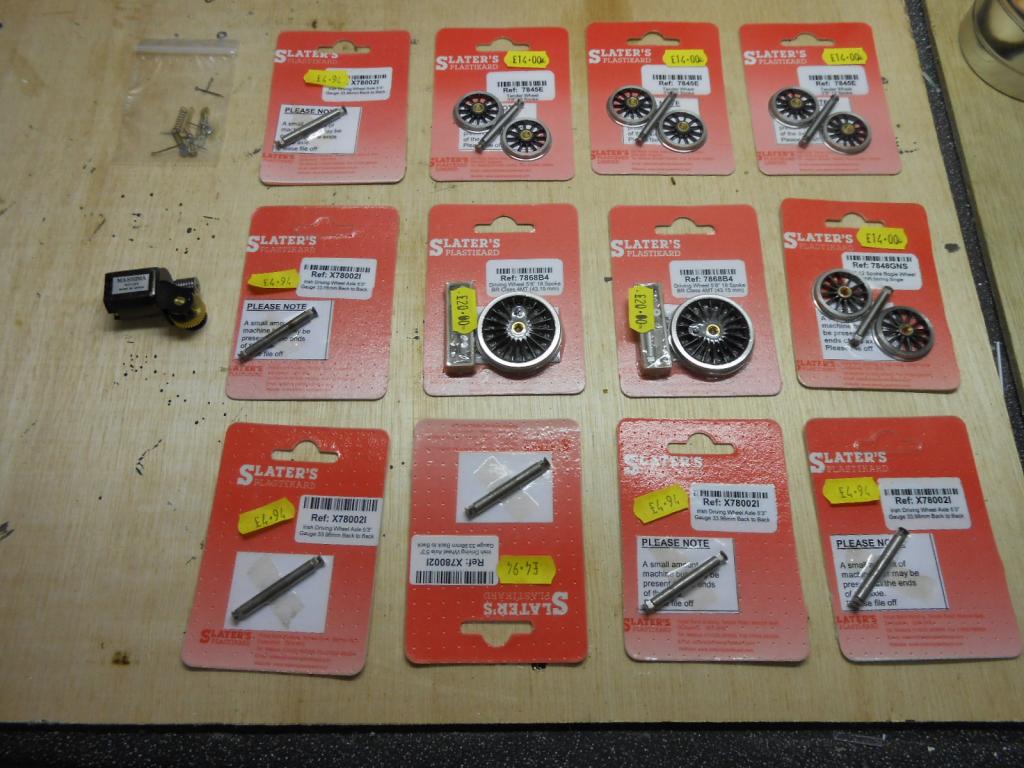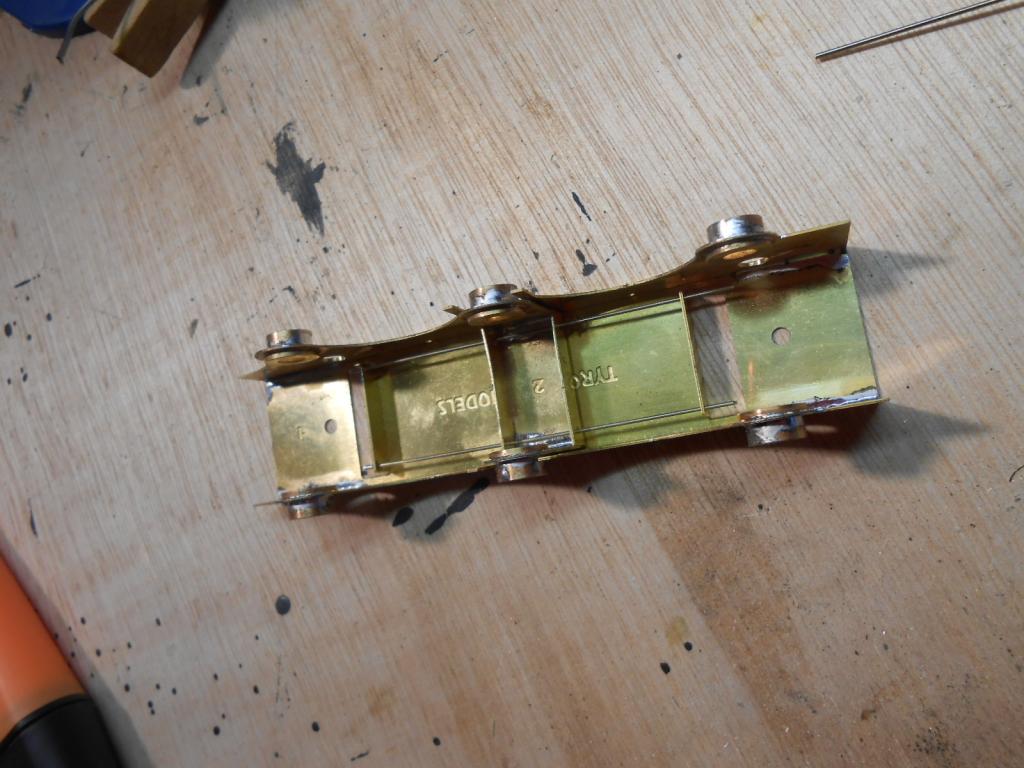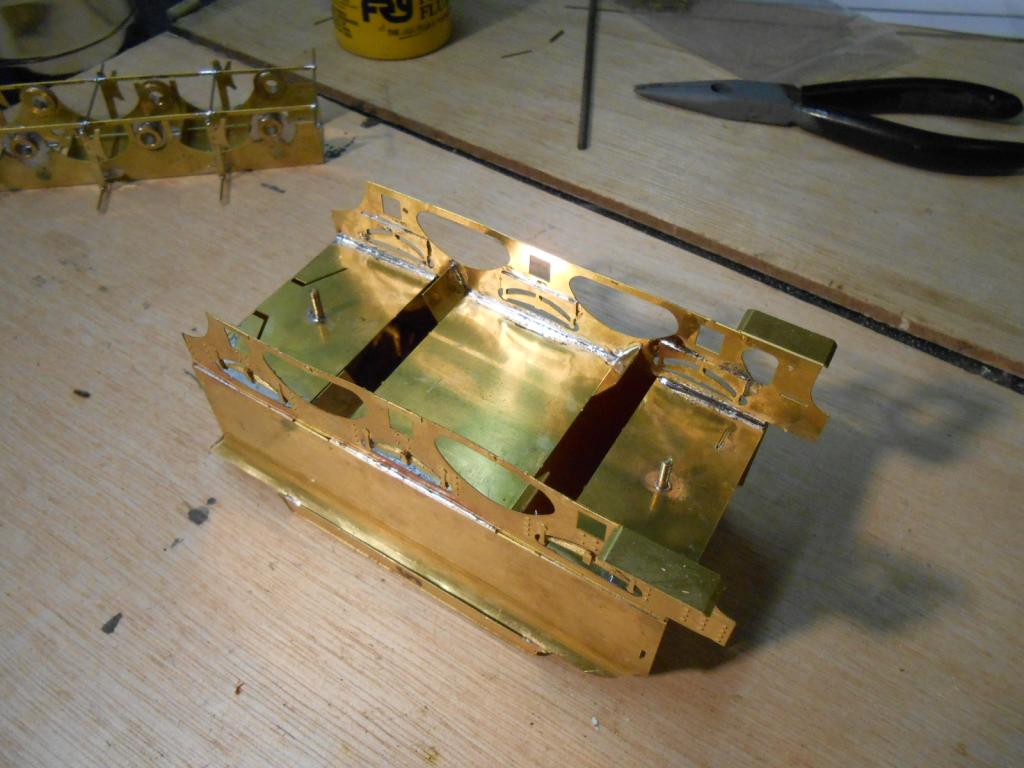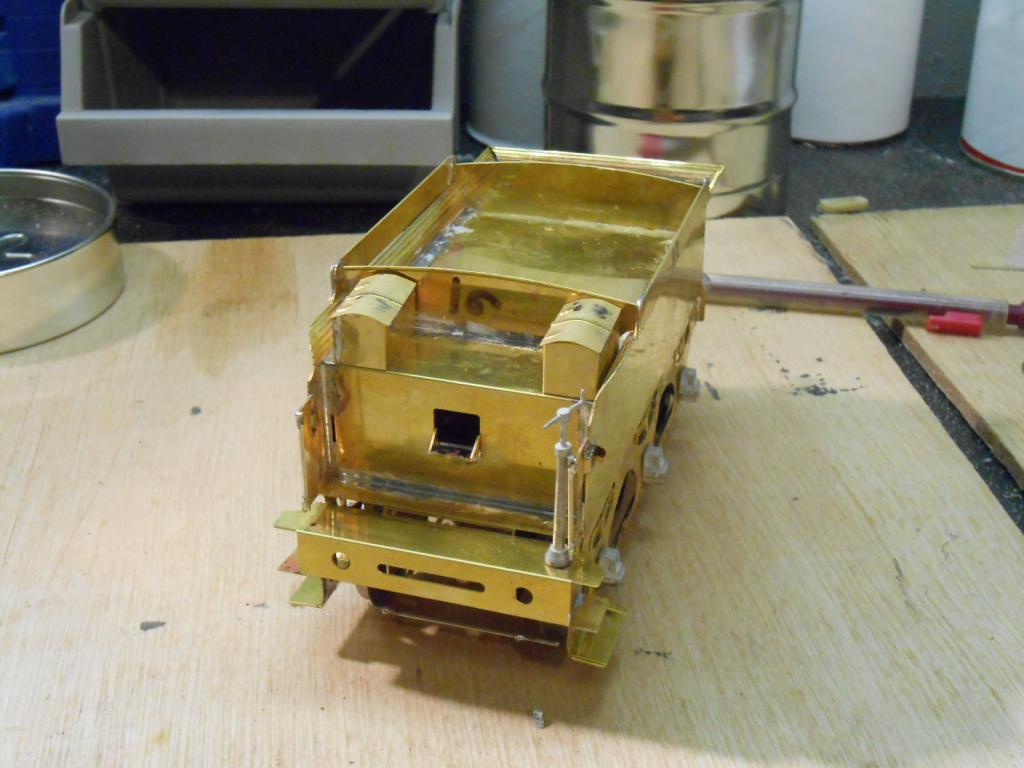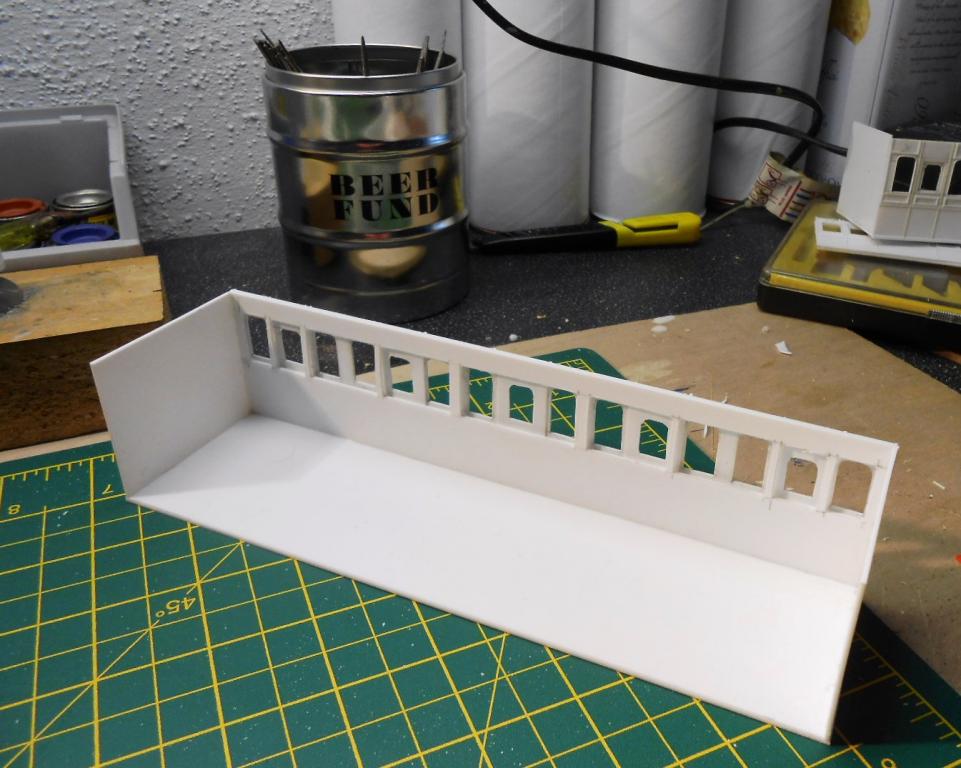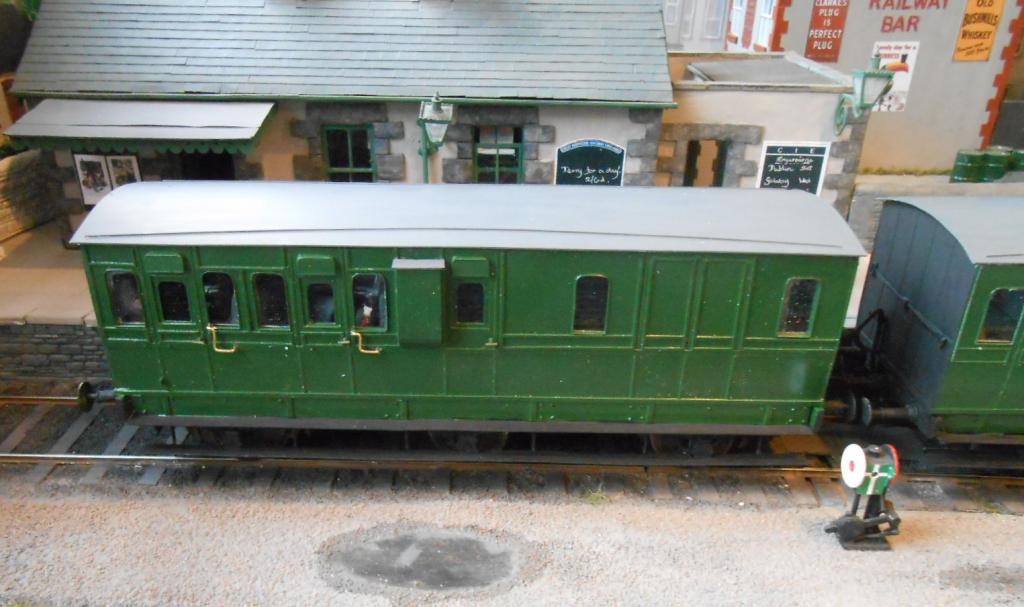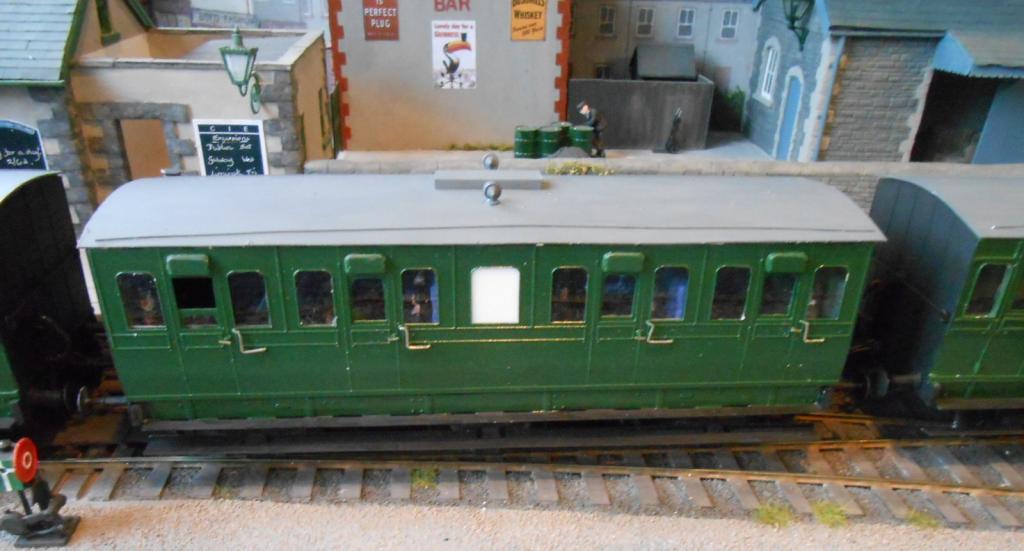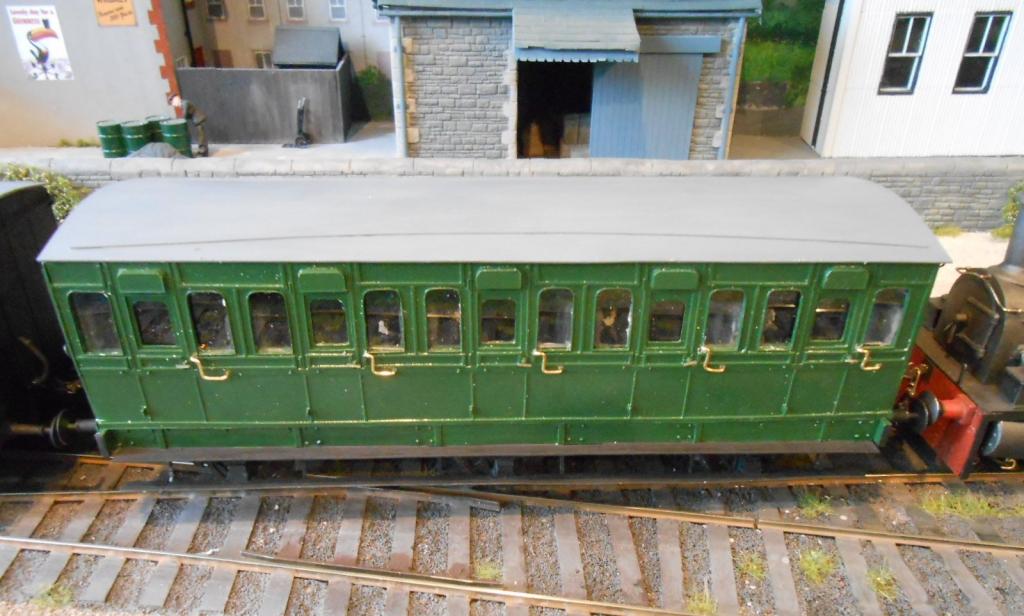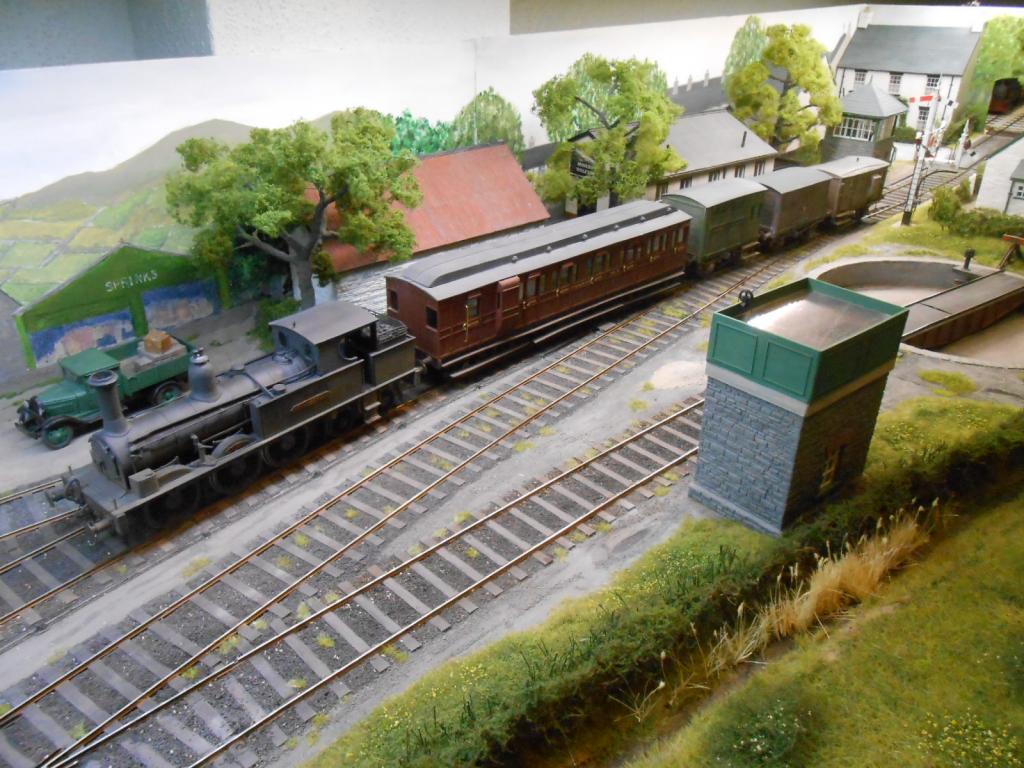
David Holman
Members-
Posts
4,336 -
Joined
-
Last visited
-
Days Won
117
Content Type
Profiles
Forums
Events
Gallery
Blogs
Store
Community Map
Everything posted by David Holman
-
Those of you following my workshop thread on new 6w coaches will know I have a bit of a problem with their livery. One or two folk have rightly said that the dark green [Ford Laurel green] I have used is too dark. Having checked my three Irish colour books, can only concur. My own fault - should have checked first! However, it will be a real issue to correct & I'd prefer not to add more layers of paint if I can avoid it. So, is there a way out? Have posted two pics showing the Alphagraphix card kits [bit more of a medium green than mine], the Tryconnel kit box [definitely darker]. There is also one in Locomotive Compendium of Ireland [boocock] album showing two six wheelers of a somewhat darker hue than the faded versions in most other photos. The question is - can I legitimately get away without a full repaint? I will be sooooo grateful for any excuses not too!
-
There is a cunning plan behind the 'joint' nature of my Arigna branch JB. The layout is already 'finished', so future modelling is about widening its scope and there is a limited range of stock if I stick solely to SLNCR. With Tyrconnel bringing out new stuff all the time, it is tempting to expand the parameters a little. Eg dieselisation would be nice - perhaps a C and/or a G? Was recently re-reading the Oakwood Press book on the Achill branch [which I'm sure you know!] and there is an interesting chapter on proposed but never built lines to Belmullet. I was musing that Arigna could even be converted one day to represent part of this. One idea would be to built a new station building to sit over the top of the existing one - completed with an overall roof which could hide a 'hole in the sky' to make the station into a through line. Something similar could be done with the goods shed - so that it covered the siding, with one wall on the platform. Still at the thinking stage, but might be a way to extend the life of the layout, without building a completely new one. In the meantime, there is still much to do, such as another railbus, Sir Henry and more figures to depict a scene on the platform of an extended family saying their goodbyes to someone emigrating.
-
The other picture is from Neil Sprinks photo album of the SLNCR
-
Serves me right for taking Pratt's Bottom's name in vain. All was well when setting up, but just as the public were coming in at 10am on the Saturday, gremlins emerged. First the turntable started playing up, then a mystery electrical fault stopped all running... The turntable's problems were rapidly traced to the locknut on the main pivot - the gear wheel turned, but the table didn't. After the show, a larger flat was filed and the pivot given a brass tube sleeve - so hopefully all is now well in that department. The electrical problem was VERY [lots of rude words here] annoying, because there are only 6 wires going from baseboard 2 to baseboard 3 [and 4 wires to BB1]. This is because the points are self isolating and worked by wire in tube. However, somehow the 9 pin computer plug/socket was shorting out and trying to investigate it, underneath the layout, with lots of folk looking on was somewhat embarrassing. We ended up having to cut all the wires and hard solder them, so it was nearly two hours into the show before things were running again. Happily, everything went well after that & all the stock ran without problems. Back home, it only took an hour to rewire a new pair of computer joiners. However, am going to hope build in a bit more safety by changing to 15 pin joiners, so there is no chance of a loose strand causing a short, because there will be at least one spare pin between each wire. Work on the turntable has also improved the 'pick ups' to the train deck. Fingers crossed, it is now robust enough to withstand the 3 day show at York, plus another 7 shows during the year. The alternative is a Metalsmith 42' table, which [motorised] will cost around £200 and still need quite a bit of adapting, as mine is only 38' [42' with rail extensions]. The Dapol kit was just £5, plus the Frizinghall hand crank jobbie, which was about £15, I think. We'll see...
-
JHB has just been pointing out to me that the 6w coaches are really far too dark a colour. The green really fades & is not the colour on the Tyrconnel kit's box. That will learn me not to look further! Seems the solebars should be black too. And the roofs. So , before I get round to weathering them, there is more work to do. A couple of pics show what the problem is, with the basic rake on the Sligo, as per Mayner's note.
-
I've never been one to keep a load of unmade kits, so the Tyrconnel G2 has been in the drawer for far too long, as I bought it well before Christmas! As much for my own amusement as any, have decided will try to record how the project goes and log how many hours it takes. First up then - what do you get for your £140? The first pictures show the box & its contents. We have some very nice looking etches, together with a bag of whitemetal castings for buffers, chimney, dome etc. However, as with most kits, you then have to buy motor, wheels & gears. On 7mm scale these are not cheap - you are looking at £20 per axle for Slater's drivers, plus £14 per axle for tender/leading wheels. The motor gearbox is from Premier Models [using a Mashima 1833].. The instructions suggest starting work with the tender, so on Friday afternoon, spent an hour cutting out the etches, filing off the cusps and labelling those that did not have numbers etched on them, ready for construction. I use a Weller 100 watt iron and 140 degree solder. A session on Saturday afternoon [listening to the footy on the radio] saw the chassis come together, brake shoes laminated & fitted and a start made on the body. The centre axle is intended to float on 0.9mm wires, though this might need tightening up a bit. Must have another read of the instructions! A couple of hours further soldering this afternoon and the body was completed, with whitemetal axle boxes cyano-ed in place - a total of just five and a half hours work. When I informed my wife that 'my tender parts were soaking in the sink', for some reason she gave me a very odd look... Course 'finished' is a moot point. The corners of the raves need filling, the solder needs tidying up, there will be a bit of filling to do & then it needs painting, lettering & weathering, so am thinking at least the same amount of time again will be needed. Nice to get something done this quickly though.
-
Thanks John - and everyone too. The plain green livery makes life easy, though the lack of even a number seems odd. I'd been looking at the Sprinks album, along with the MGW history book and Des Coakham's one on coaches, plus the GSR album too. The paint I've used is Ford Laurel Green, from an automotive spray can. It seems to match the shade on the Tyrconnel kit's box, so fingers crossed it is about right. Like the Gaelic Football specials idea. I also had in mind a pilgrimage to Knock, via Claremorris, which seemed to host a lot of these. Maybe one to Croagh Patrick too - both down the Burma Road. Have always seen my bit of fiction as a joint project with the Sligo being backed by the MGW, with the latter having running rights. Hence the J26 on the coal trains & eventually a G2 on an excursion. Gives me an excuse to build more stock & maybe a new project in a few years time. Lots of photos of G2s at Sligo, so hopefully doesn't stretch reality too far.
-
The panelling is not too bad, because it just uses microstrip. This works fine when you have square panels, but if they are curved then you have to carefully cut out a complete bodyside [usually 10 or 20thou], which is can be a pain - rude words have been uttered in the past!. With these coaches, the worst bit was cutting out the window apertures, especially as the tops are curved, so all needed careful work with needle files to get the shape right & then the edges were lined with 10x30 microstrip to represent the beading. Seems to work, as long as nobody gets too close...
-
Beauties - signals are far from easy in my experience and these really look the part
-
Fabulous - a real jewel.
-
A gem! Going back to the turntable, mine on Arigna Town uses a similar system, except it is hand cranked. Got the parts from Frizinghall models [see advert in Railway modeller]. Have fixed it to the old Airfix [now Dapol] kit. The only issues I've had are making sure there is a good flat on the main pivot rod [or the gears go round but the TT doesn't] and putting a brass tube in through the baseboard to tighten up the operation. Methinks if this survives three days at the York show this Easter, it will be doing well. The Metal smith alternative runs to around £200...
-
Nowt wrong with the loco Nelson - that's a very fine finish you have achieved.
-
Very impressive - both quality and quantity!
-
Love all those different roof lines and levels. Will look forward to seeing how the project develops.
-
Indeed! All contributions welcome, of course...
-
Works well in 7mm scale too and their point kits make building your own track both satisfying and easy.
-
Do note that HO is 1:87 and 00 1:72. The difference may seem small, but is very noticeable. For my preferred 7mm scale, when you put a Corgi Classic bus [1:50] against a true scale 1:43 model, it shows just how much small the former is. By the by, there was also Trix Twin, which was around 3.7mm/ft, while Gauge One is still and odd amalgam where anything goes in some cases - from 10mm/ft to 1:29.5 and all things between
-
As suggested, various types will work. My personal favourite has been car body filler, from the likes of Halford's. A two part job that sets in minutes and is easily sanded/filed. It was used extensively to get the subtle curves on my SLNCR Railcar B [see David's Workbench] and works just as well when filling in gaps on etched brass or whitemetal kits.
-
Very interesting & a rather nice model as well. Can anybody point me in the direction of a drawing, as wouldn't mind having a go at a 7mm scale version?
-
It has been a while since I last contributed anything, but I have been busy coach building, with a rake of three Midland Great Western six wheelers. These will form my excursion/pilgrim train, to be hauled by the G2 2-4-0 I am about to start. One of the coaches is a Tyrconnel etched kit; the other two are scratchbuilt in plastikard, based on Alphagraphix card kits, using their brass 6 wheel chassis kits. The latter are slightly more basic than on the full coach - this has a fully sprung chassis, which though simple is very effective. I tried to be clever on the scratchbuilds and cast my own axlebox units from resin. My advice would be DON'T. It took far too much time, they are far less robust than whitemetal and there is little if any saving in money either. The photos show the finished models [i will leave you to decide which is the etched kit & which are the scratchbuilds], plus a few from the construction process. The techniques are the ones outlined by David Jenkinson in his book 'Carriage Modelling Made Easy' and essentially use a basic plastic shell upon which the outer panelling is built up. Very straightforward and satisfying - if you can mark out and use a scalpel or craft knife, coach building should not hold any fears. Also included is a shot of the new Sligo parcels van, complete with a full weathering job
-
Indeed! However, is anyone left alive in Midsomer? Methinks the serial killersust have got them all by now...
-
As it has been a while, thought I'd bring you up to date on what is happening on the layout. Much has been covered in the workbench section, but these notes will try to bring it all together. The layout is effectively complete, as far as scenery goes, so work since the summer has concentrated on stock and operation. For the latter, new LED lighting strips have been fitted, cutting power consumption down from 480 watts to 150, with [i think] sharper light too. A fair bit less heat as well! The fiddle yard bolts needed attention after the Uckfield show, so these has also been strengthened, while the cassette for the railbus in the fiddle yard has been rebuilt to enable power and alignment without any leads or clips. This simply uses screws going through the aluminium angle & 80thou plasticard base, which then sit on brass plates, which are wired to the incoming tracks. Wrote this up for the Model Railway Journal Christmas Competition in 2013 and in the last couple of weeks heard I'd come runner up. Can't be bad as this gives me two years subscription. A new project is underway, to build a 'Pilgrim's Train'. These were regular sites on both CIE and GNRI. Mine takes advantage of the new Tyrconnel G2 2-4-0 and a rake of 6 wheel coaches. One of the latter is approaching the paint shop. It is another Tyrconnel etched brass kit. The other two will be scratchbuilt from plastic, using the Alphagraphix card kits as drawings. Am hoping the full train will be available for York at Easter. Before then, the layout has another outing, this time at the Orpington show [small but very friendly & always with some very good models] on the second weekend of January. This takes place at the wonderfully named Pratts Bottom village hall, just up the road from Badger's Mount. I kid you not...
-
Very impressive - will join the queue following its progress! By the by, Agenora models are soon to release a kit of an Aveling & Porter geared engine [7mm scale], with full working motion, flywheel etc. Looks right up your street.
-
A fine array of wagons, Nelson & an interesting bit of history re the LNER opens - especially as I have a couple myself which I built for my BR, Eastern Region layout. 32mm gauge, but easily altered for wagon wheels. One constructive comment, if I may. Wagons of the quality you are producing would look even better without the ugly tension lock couplings. Can understand why folk use them, but there are alternatives, which might be worth investigating. Three links are a bit of a faff in 4mm scale, though I found I could work them if I stuck to the Smiths ones, which have fairly large links and hooks. Alternatively, Dinghams are not bad either.
-
Arigna Town - this week's scenery
David Holman replied to David Holman's topic in Irish Model Layouts
Sadly, there is only enough room in the fiddle yard for two wagons and a brake van [plus coach No 9] on the mixed train. Until now, these two wagons have been a mix of whatever is available and at exhibitions, I like to keep things as simple as possible. In my experience, the paying public aren't too interested in seeing lengthy shunts, while it is not unknown [when they do occur], that the same wagons go out as come in! However, with a parcels van to add to the horse box, for home use, the mixed train now uses there two on one leg, replacing them with two from the goods shed siding. Given that both really need to go right at the end of the siding, against the stop blocks, this can call for a degree of stirring in the grey matter. The photos show an incoming train.
.png.c363cdf5c3fb7955cd92a55eb6dbbae0.png)
